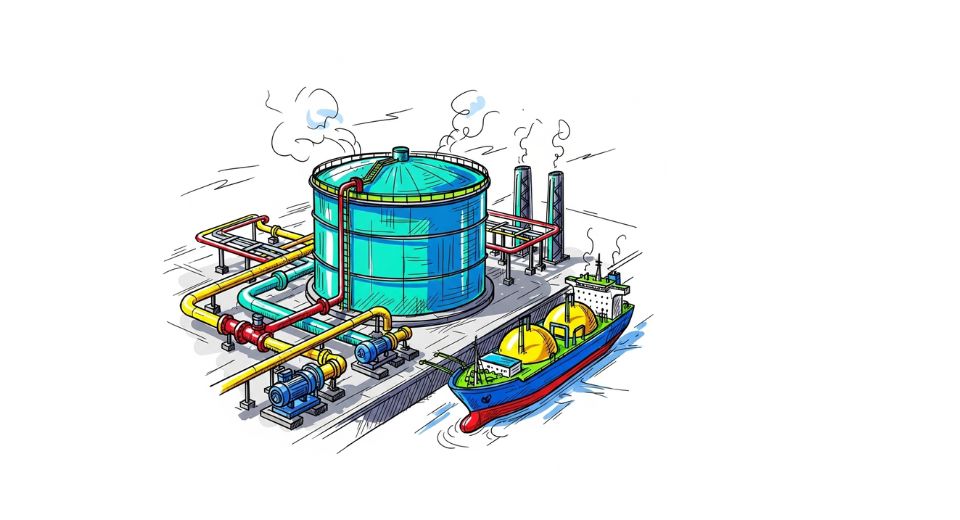
Aug 07, 2025

The new report released by Metastat Insight brings new insight into the Global LNG Market, providing a nuanced story that eschews familiar cliches in favour of a closer examination of the particular changes that are remolding this industry. The report goes beyond surface-level analysis, capturing nuances and cross-border tendencies that are reshaping the way liquefied natural gas travels within the industrial world. It sets out a context that encourages further exploration of the structural dynamics that inform the LNG business, instead of rehashing the customary clichés.
Near the center of this market is an unobtrusive reshaping not so much an abrupt disruption as an evolving, careful reshaping. Old assumptions about the sources, transport, and demand for LNG are being redefined in terms of newer alignments, indicative not of market shocks but of step-by-step adjustments. LNG is no longer the exclusive domain of energy-oriented economies or as supplementary content in domestic grids; it now represents a more profound role in policy plans, commercial priorities, and domestic planning. This evolution is not so much declared as implied, deciphered through pipeline master plans, fleet upbuilding orders, and updated delivery calendars.
The burden of logistics here cannot be exaggerated. Fleets relocate not only to transport product but to provide support for strategic position. Shipping routes are reconfigured quietly, not merely for geographic reasons, but as a response to economic calculation now incorporating developing corridors. Terminals previously considered infrastructure have become points of leverage. Their location, volume capacity, and technology readiness increasingly dictate the cadence of supply and the movement of negotiation. It's not merely a matter of transporting LNG from here to there, but rather who owns the in-between.
This rebalancing has pushed new entrants into the spotlight. There is an unspoken pride among players who were once left out but are now part of an expanded matrix. Smaller players and middle-of-the-pack operators have emerged with reconfigured business models, constructed not around size and scope but around agility and operational smartness. Their availability brings dynamic equilibrium, deflecting the market from monopolistic momentum and toward a diffused, strategically allocated structure. This is not simply diversification; it is a silent redistribution of power.
Contracts, previously long and inflexible, have started transforming into tools of flexibility. Hard terms are being replaced by provisions that reflect geopolitical uncertainty as well as the fluidity of seasonal demand. Shoppers are opting for plans that accommodate agility, and sellers are adapting. This is not about uncertainty it's about preparedness. LNG suppliers are designing capacity to accommodate variable flows, aware that tomorrow's route or partner might differ from today's.
In this context, digital systems and data integration have grown into non-negotiables. Predictive modeling, route simulations, and real-time supply assessments are gradually replacing manual oversight. Efficiency is no longer only about fuel management or vessel size; it’s about visibility knowing where volumes are, what alternatives exist, and how shifting one part affects the other. But this digital hug is silent, occurring not in great leaps of technology but in a thousand little fits together across terminals, vessels, and trading desks.
Financial arrangements are equally quietly changing. Investment flows are recalibrating to align with both risk and opportunity. Capital now flows with strategic patience, assigning resources not to widespread expansion but to selective, high-leverage interventions. Financing infrastructure is no longer merely about completion but responsiveness financing that enables agility over scale. Investors know that profitability does not come from mass output, but from the degree to which operations can anticipate and absorb change.
What emerges, then, is a market defined by subtlety and precision rather than spectacle. LNG itself has not changed, but the context in which it operates has. Each decision whether it's about where to anchor a vessel or how to renegotiate a supply agreement feels more deliberate, filtered through layers of logistics, geopolitics, and capital alignment. This requires a more sophisticated reading of the market, one that transcends self-evident supply and demand commentary and toward an integrated perspective.
The Metastat Insight presentation of this evolving Global LNG Market achieves just that: a balanced, comprehensive perspective that honours the particularity of its subject. It neither tries to sensationalize motion where there is calculated change, nor attires complexity in obfuscatory abstraction. Rather, it presents a consistent picture of how industry players are engaging not as monoliths, but as components of a nimble, responsive system.
As the LNG industry continues to evolve, it is clarity like this that is of most use. Not sweeping conclusions, but precise observation. Not proclamations, but record. From the perspective given in this new book, one sees not simply the architecture of the Global LNG Market but the intellect with which it is being reconstituted. Metastat Insight's value, therefore, is not simply informational it is a basis upon which industry professionals can make their next move with vision and accuracy.
Drop us an email at:
Call us on:
+1 214 613 5758
+91 73850 57479